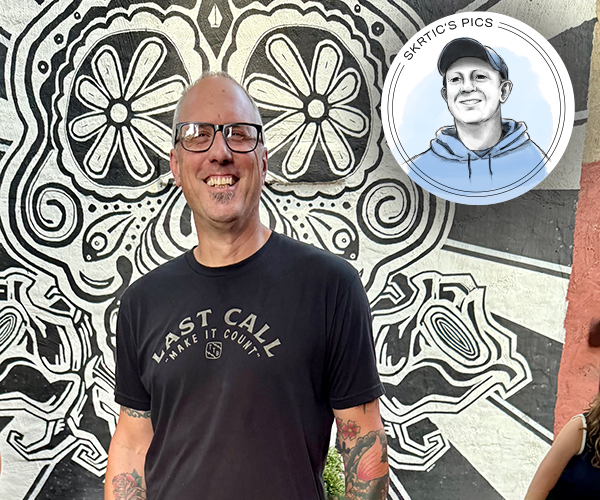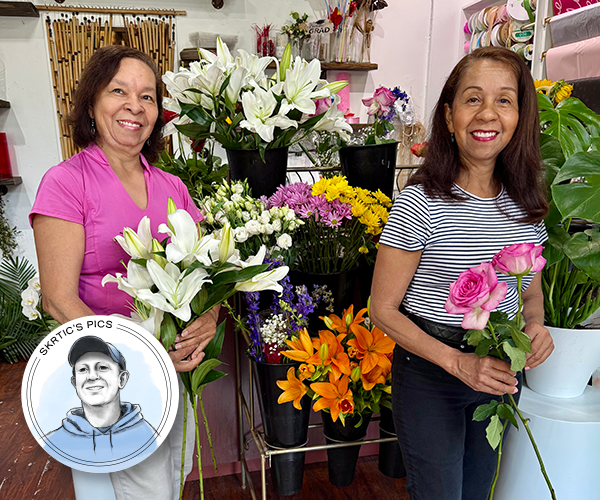Late at night, when he was just a kid, Donald Black Jr.'s father, who did not live with the family, would occasionally stop by his son's bedroom and set up a chessboard.
He would wake little Donald, the two would play chess, and he would say things like, "I can tell you been practicing," and "Whatever piece you been practicing with, I'm taking that piece off the board so you can get better."
It was, essentially, one of the few authentic interactions the younger Black had with his father as a child. "It wasn't that he was completely absent," Black explains, "but he was not completely present either."
Those sporadic, late-night chess matches — they lasted from the time Black was 7 until he turned 16 — have burned an impression on the artist that is just now coming through in his work.
He'll explore it this month with an art installation of six chessboards in the Cleveland Public Library reading garden as part of Cleveland Public Art's See Also program.
Black, a photographer first and foremost, has captured images of abandoned Cleveland buildings and their windows. Those photographs decorate the 4-square-foot chessboard playing surfaces, which rest atop solid, 3-foot-tall cubes. The base of the cubes will be decorated with images of the six different chess pieces.
"I'm now consciously creating [art with] the game of chess [in mind]," says Black, who has made chessboards and pieces since he was younger as a way to stay connected to those memories of his father. "I'm attracted to the patterns of the windows [in my photographs], from the one that is broken to the one with the bullet hole in it to the one that is frosted to the one with the vine over top because, visually, they kind of look like chessboards to me."
Black began attending the Cleveland School of the Arts in the fourth grade. He left Cleveland at 18 to attend Ohio University and then moved to New York City. He was there for five years, all the while visiting galleries and museums that were full of artists telling stories about who they are and where they had come from.
This led him back to the game of chess and the city of Cleveland, where he returned three years ago.
Now Black, who teaches art and chess to inner-city kids, uses the game as a way to interpret life. For Black, the queen is freedom, the king is stability, the bishop is wisdom, the rook is honesty, the knight is a unique approach, and the pawn is risk-taking. "All of that is based on the conversations me and my dad had a long time ago playing chess," Black says.
Black's work was chosen out of six artist proposals, says Tiffany Graham, project manager at Cleveland Public Art.
"One of the things we loved about Donald's work is it was so personal," Graham says. "It was telling a story, his story, but also looking at everybody's story. He's creating connections between people and looking at chess as a strategy for life."
The chessboards will be installed this month with an artist reception set for June 9. They will stay up until October. Black is also making about 1,000 chess pieces that will be part of the exhibit. He wants and expects people to stop and play chess on his boards, and he wants them to take a chess piece home with them.
The first match, though, has been reserved for Black and his father, who have reunited and begun developing a stronger relationship, one that has them talking just about every day and seeing each other a couple times a week.
"We play chess every time we see each other," Black says.
More Info clevelandpublicart.org



